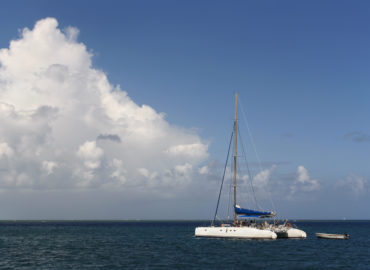When you hear the term “rural,” what images come to mind? For many people, the word evokes vast, open landscapes filled with farmlands, pastures, or wild natural environments. Undeveloped land, forests, and farmland are common features of rural areas.
These are also typically situated away from cities and have low housing density. So, imagine a huge expanse of land with a few houses or buildings located far from each other. As a result of this setup, rural areas are often sparsely populated.
In the United States, which has a total area of 3.5 million square miles, a majority of the land is considered to be rural, while only around 10% comprise urban areas. However, urban areas are home to more than 80% of the county’s population, while a significantly lower population live in rural locations. Of the more than 333 million Americans living in the country in 2022, only 46 million resided in rural areas, according to the Economic Research Service of the United States Department of Agriculture (USDA).
With this information in mind, let’s take a look at Mississippi and determine whether or not it is a rural state. While I love vast landscapes, nature and wildlife, I think it would be difficult for me to adjust to Mississippi rural life.
Mississippi Rural State Info
The Magnolia state boasts being the birthplace of the blues and was a major battleground during the Civil Rights Movement era. Along with its rich cultural heritage, Mississippi is also famous for its agricultural landscape.
Surrounded by Tennessee, Alabama, Louisiana, and Arkansas, the state covers an area that is nearly 47,000 square miles. Of this, 10.3 million acres belong to more than 30,000 farms, according to the Mississippi Department of Agriculture and Commerce.
Agriculture is the no. 1 industry in the state. The industry directly or indirectly employs 11.4% of Mississippi’s workforce. These agricultural workers form part of the state’s rural population.
- Mississippi’s Rural Population
Based on data from the U.S. Census Bureau, the Magnolia State had a population of more than 1.5 million people living in its rural areas in 2020. This represented 53.7% of Mississippi’s inhabitants at the time.
“More than half of Mississippi’s population calls a rural community home,” said the state’s treasurer, David McRae. “In fact, of the Magnolia State’s 82 counties, 65 [or 79.3%] are deemed rural.”
For instance, the Delta region is a well-known poverty-stricken rural area, while Southwest Mississippi features significant timber stands.
Meanwhile, the remaining roughly 20% belong to the state’s urban areas. The Health Resources and Services Administration (HRSA) classifies them into three standard metropolitan statistical areas (MSA):
- The Jackson Metropolitan Area, which consists of Madison, Hinds, and Rankin Counties;
- The Hattiesburg Area, which includes Lamar and Forrest Counties; and
- The Gulf Coast Region, which consists of Jackson, Harrison, and Hancock Counties.
- Mississippi’s Most Rural Counties
In a compilation put together by Stacker, 23 counties in the state were considered to be 100% rural areas. These are as follows:
Table 1. 100% Rural Counties in Mississippi.
| County | Total Area | Population Density |
| Issaquena County | 413 square miles | 3.0 people per square mile (1,223 residents) |
| Sharkey County | 432 square miles | 10.3 people per square mile (4,427 residents) |
| Kemper County | 766 square miles | 12.8 people per square mile (9,829 residents) |
| Wilkinson County | 678 square miles | 12.9 people per square mile (8,727 residents) |
| Franklin County | 564 square miles | 13.7 people per square mile (7,716 residents) |
| Jefferson County | 520 square miles | 13.7 people per square mile (7,129 residents) |
| Carroll County | 628 square miles | 15.9 people per square mile (9,972 residents) |
| Amite County | 730 square miles | 16.9 people per square miles (12,341 residents) |
| Perry County | 647 square miles | 18.5 people per square mile (11,981 residents) |
| Claiborne County | 487 square miles | 18.6 people per square mile (9,042 residents) |
| Green County | 713 square miles | 19.1 people per square mile (13,619 residents) |
| Choctaw County | 418 square miles | 19.6 people per square mile (8,206 residents) |
| Benton County | 407 square miles | 20.4 people per square mile (8,275 residents) |
| Clarke County | 692 square miles | 22.6 people per square mile (15,612 residents) |
| Webster County | 421 square miles | 23.1 people per square mile (9,727 residents) |
| Jasper County | 676 square miles | 24.3 people per square mile (16,454 residents) |
| Calhoun County | 587 square miles | 24.6 people per square mile (14,417 residents) |
| Smith County | 636 square miles | 25 people per square mile (15,919 residents) |
| Jefferson Davis County | 408 square miles | 27.4 people per square mile (11,182 residents) |
| Lawrence County | 431 square miles | 29.2 people per square mile (12,595 residents) |
| Walthall County | 404 square miles | 35.7 people per square mile (14,423 residents) |
| Covington County | 414 square miles | 45.5 people per square mile (18,810 residents) |
| Tishomingo County | 424 square miles | 45.7 people per square mile (19,396 residents) |
Source: Stacker
Challenges Facing Rural Mississippi
While living in a rural setting might encourage a more unhurried and laid-back lifestyle, it isn’t without flaws. More people living in rural areas face poverty, lack access to essential services, and experience other problems.
“Rural Mississippi faces many challenges, including lack of access to healthcare, educational opportunities, and digital connectivity, which all hinder economic development,” Dr. Trina George, the USDA Rural Development (RD) state director for Mississippi, said. “These issues are compounded by a higher poverty rate compared to urban areas, making it difficult for many residents to access essential services and opportunities.”
For instance, many rural residents tend to be in poorer health. Part of the reason for this might be the inadequate number of doctors available in the area and difficulty in accessing hospitals and other health resources. According to Mississippi State University, “More than half of our doctors practice in four urban areas and all or part of our 82 counties are considered to be medically underserved.”
Other areas that pose a challenge to rural Mississipians include lack of access to educational opportunities, digital connectivity, higher poverty rate, inadequate housing, reduced employment opportunities, out migration or sinking population, and aging infrastructure.
Is Mississippi a rural state?
In conclusion, Mississippi can indeed be considered a rural state, as more than half of its population resides in rural areas, facing unique challenges and opportunities.





